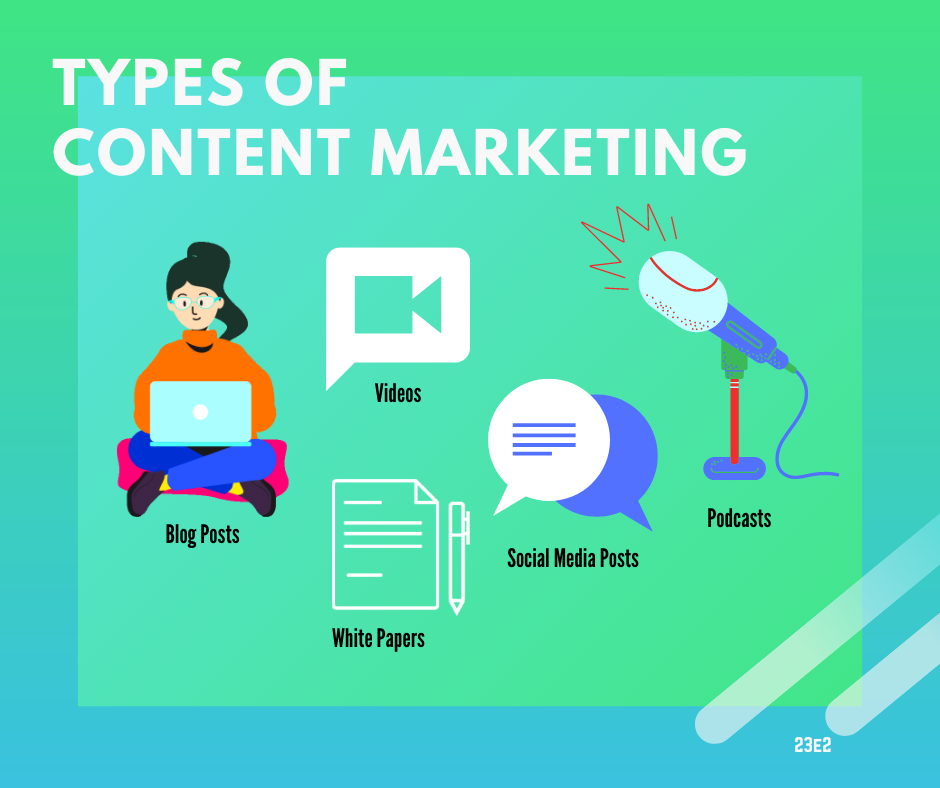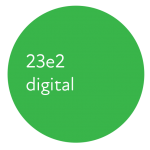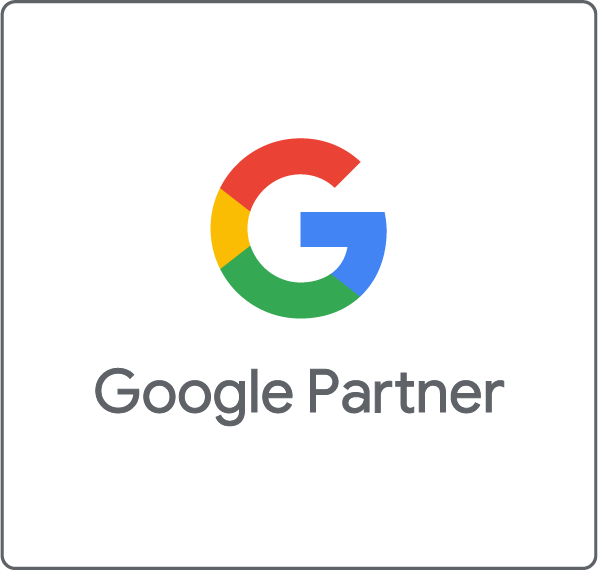content marketing
We Enhance Your Online Presence Through a Personalized Content Marketing Strategy
How many times have we skipped an ad before watching a video on Youtube? In the digital world, we have the power to pick and choose what content we want to consume, but everyone consumes content, but only a selective few really stick with audiences. Online and on Google, millions upon millions of media content is being uploaded and viewed at rapid rates. But how will your business make an impression amongst the oversaturated landscape of articles, videos and products?
Yes, regular marketing advertisements can catch a few glances and clicks to your page, but how many times have we actually waited out on those clips instead of skipping them on a Youtube video?
That’s where content marketing comes into play. In the world of SEO, content marketing is what will drive traffic, rankings and revenue that your customer base actually wants to receive. If you’re looking for a and The plan on Google is to We want to provide your business with a content marketing strategy that not only creates longevity in your customer relationships, but makes a profit through our determined team and ambitious SEO practices. Content Marketing is not just about
Table of Contents
What is Content Marketing?
Content marketing is the act of delivering value and satisfaction to create substantial relationships with your targeted consumer base, which in turn generates sales as a result of long-term customer engagement. In SEO, content marketing is publishing high-quality online material to your target consumer base that combines search intent, keywords, appropriate linking, CTA, and a user-friendly experience to drive traffic and leads for higher ranking and revenue.
It’s all about creating genuine customer interest, and by doing so your brand or business is able to not only tell your story, but sell it. That’s why implementing a content marketing strategy for your SEO is key to getting the most out of your viewers for the long-run.
What is a content marketing strategy?
Simply put, it’s the steps your business will need to take in order to provide that (chef’s kiss*) quality content that Google and other search engines will be looking into when choosing which sites to promote.
Digital content marketing comes in many forms, but the most important part of your content marketing strategy is knowing what your audience wants and what works for you. By understanding your target audience you can tailor these marketing strategies to appeal to your customers.

Here are 6 steps involved in a winning content marketing strategy for SEO:
1) Align your business goals with your content
Our goal at 23e2 is to help our clients get their page and articles on Google’s top search results. Your business may want to focus on brand awareness, increased CTR, dominate your chosen keywords, or attract a new customer base. Whatever the case may be, make sure your content channel presents your brand narrative in an interesting way.
From experience, most brands want to focus on maintaining growth within a specific audience, so if you’re not sure, you can start there.
Once you know your audience and your brand values, it’s time to pick your preferred way of marketing your content. It’s usually best to centre your efforts on one channel at first. Not everyone will benefit off of written articles, and if your brand values centre around more active one-on-one engagement or visual references, YouTube videos, vlogs and social media posts will be better.
The best sources to get the most out of SEO, Google SERPs and CRO are blog posts since they are the bread and butter of SEO marketing.
What is content writing for SEO?
SEO content marketing used to mean over using keywords, clickbaiting, and suspiciously implementing big backlinks to get ahead. Now, content writing for SEO must be credible, accurate, and most importantly written with intent.
This is different from traditional blog or professional copywriting, because it structures around the “high-quality” content which is the leading factor of evaluation by Google. But what does Google mean by “high-quality”?
What is “High-Quality” content and why does it matter?
In their own words,
“A High quality page should have a beneficial purpose and achieve that purpose well.” (Sec 4.1)
For your content to maintain that quality and get acknowledged by Google, it must also implement:
- E-A-T or Expertise – Authoritativeness – Trustworthiness: the 3 “most important aspects of your website” that they will be evaluating on. E-A-T is especially important for posts regarding the YMYL (Your Money Your Life) category, because these touch upon sensitive areas which need to be fact checked and reliable for customers so as to not spread false information. If your business specializes in YMYL topics such as finance, mental and physical health, racial, minority, or sexual orientation groups, civil law and society, or personal wellbeing, you need to heavily consider E-A-T as much as Google will be looking for it within your article.
- A good, descriptive and strong headline, with as many keywords as you see fit. Once you have a clickable title that is able to entice your audience, you have substance for your post to convert.
- Website information that satisfies a customer query. It should include a necessary and clear CTA or Call To Action button to satisfy customer questions. The recommended amount is the use of only one CTA, as it can actually lead a customer to ignore everything altogether. This should create urgency, such as a 10% off discount, and provide purpose, like a link to customer service information or a newsletter, and not act as an annoying pop-up ad. In terms of design, make sure your CTA is not hard to find or too imposing and hard to opt out of.

- A well established reputation online. As Google states, you should have “Positive website reputation for a website that is responsible for the MC on the page. Positive reputation of the creator of the MC, if different from that of the website.”
Website and UX design
High quality can definitely come in the form of the design of your website, and how well it translates from desktop to mobile to user. Your layout and user design is vital when considering conversion rates, and will determine how willing your consumers are to spend on your products or services.
Ranking is also affected by mobile conversion, as Google indexes with mobile in mind. You should run cross-platform examinations to see how well your desktop looks on different devices.
Site speed is a huge quality and conversion factor. Studies have shown that about 30% users won’t wait more than two seconds for a page to load. If you have pop-ups, images or other large visuals, this is an especially important factor as user interest decreases 1% for every 100 milliseconds.
2) Prioritize ranking based on your industry’s topics
Targeted topics = targeted traffic. For all of our clients, we prioritize our writing based on the most sought after topics in your industry. They should be short and straight to the point, and target keywords you are marketing towards. These could include sections of FAQs, How-To articles, reviews and DIYs.
Their main idea however, should be choosing the topic that has the highest chance to end up with a sale. For example, an article on “How to perform glute exercises with these three bands” let your customers know they’ll need the exercise bands or equipment that you sell in order to engage.
3) Collaborate on a personalized Content Calendar
Creating a content calendar alongside your team may seem like an unnecessary step, but it will keep your team on the same page when creating content. The calendar will allow your team to completely understand their roles while also creating stability so that your team is not overworked.
The easiest way of creating a content calendar with your team is by using a content calendar template as a starting point. A template such as HubSpot’s social media content calendar template will boost your team’s productivity and their content creation efforts. All you need to do is to collaborate with your team and set specific days and deadlines for the content creation for your brand.
4) Content promotion
Although backlinking has been stepping out of the SEO limelight as of late, it is still a main feature in encouraging content sharing. Getting linked by credible sites is a great way to enhance your online authority, and will get points from Google. Internal linking to other posts within your site will also get your customers to stay longer and have a better chance of exploring the rest of your content. It also helps search engines to easily index your site.
But, what is even important more than backlinking? The answer is creating valuable content. The truth is that just because you provide backlinks to highly reputable sites does not mean that your site will instantly appear at the top of the search rankings. Google’s algorithm now places more of a focus on the quality of your content over the number of backlinks that you refer to. What makes quality content? Things such as using images with alt tags, visual aesthetics and writing quality can each set you apart from competitors judged by Google’s algorithm. You should also add keywords, graphics and media for your content and try to make your content to be easily read by anyone.

5) Search Intent Strategies
Before we break down the best search intent strategies, you need to understand what search intent really means. Search intent is the main objective of a user when they conduct a search on a search engine. Users are typically trying to find an answer or resource to their search. For example, someone may search for a cake recipe while another person may search for take-out cakes. While both of these searches relate to the same topic (cake), the web users have different intents.
Keeping this in mind, there are variety of the different types of search intents:
- Informational: The searcher is seeking the best solution for a need (e.g. “where can I buy a bed”)
- Commercial: The searcher has found a solution(s) and wants to compare them (e.g. “bed reviews”, “best beds”)
- Transactional: The searcher is confident in making a purchase based on the researched options (e.g. “cheap beds”, “bed cost”)
- Local: The searcher wants to make a local purchase (e.g. “beds in Toronto).
- Navigational: The searcher wants to find a certain website (e.g. Sleep Country).
- Informational strategy: If we use the “where can I buy a bed” example, we can realize that informational searches are typically question-based, looking for the answer to a question. The best way to optimize your content is by using your keywords alongside intent modifiers. Intent modifiers are words that indicate intent and can change the meaning of a search for Google’s algorithm. For example, simply searching “beds” will display much different results than if you were to search up “where can I buy a bed. Google recognizes this, so that when “How to” is searched, it pulls up results such as a guide or instructional video.
- To optimize your content to find informational intent, you can mention parts of the searched question in your website components such as headings, subheadings, URL, page title and descriptions. Some of the best modifiers that you can use are words such as ‘how’, ‘guide’ and ‘tutorial’. It should also be noted that articles, step-by-step posts and how-to videos are the best content types for informational intent.
- Commercial strategy: For the commercial search intent, the searcher is looking to compare options and determine the best one to purchase. For example, by searching “best beds” the user will be presented by results that have detailed product/service descriptions first. Blog posts that compare different products in the same industry will also rank high if the content describes how each one can benefit you. To optimize your web pages you can include words such as ‘top’ and ‘review’ in blog posts and reviews on your website. This will boost your credibility for the commercial search intent.
- Transactional (and local) strategy: When a user makes a transactional search they either want to carry out an action such as buying a product or signing up for a newsletter. Searchers typically search for the exact products that they need so that they can conveniently complete the purchase. This means that when you are optimizing your web pages that you should focus on keeping your buyer focused on purchasing the product.
- The best way to optimize your webpages is by using transactional words such as product words, brand names, specific category names (etc..). You can also use intent modifiers such as ‘buy’ and ‘discount’.
- Navigational strategy: Using the example of “Sleep Country”, when a user conducts this search it is clear that they want to go to their website over everything else. The Google algorithm recognizes this and places priority on getting the main Sleep Country website and other related resources on the SERP. If the searcher is navigational, then they probably know of you or your brand’s name.
- In this case, you should optimize your website by having clear landing pages of your homepage, the products/services, the company details and all about your services and your targeted clients. You need to also make sure that your brand and its product/service name are located in the page title, subheadings, meta descriptions, so that Google can qualify your site as a strong result. The most common types of content that is produced for this search intent are landing pages and search pages.
- By optimizing your content to fit each of these search intent types, you can improve your SERP ranking, increase your click through rate and reduce your bounce rate.
6) Translate and track your traffic
Now that you have successfully created your content and tailored it to fit the search intent strategies that you desire, it is now important to track the performance of your page. Tracking the performance of each of your webpages using a tool such as Google Analytics will give you a better idea of which of your webpages is generating quality web traffic leading to conversions, as well as the web pages that need further optimization. Keeping track of the performance of each of your web pages is the best way of determining how you can improve your website and boost your SERP ranking. In the case of Google Analytics, it can help you with strategies including:
- Identifying your organic search traffic
- Measuring the quality of your SEO traffic
- Recognizing your slower loading pages
- Discovering what pages have the highest bounce and conversion rates
If you do not understand how to use Google Analytics (GA), we can help you understand how to recognize the strength of your content and how to optimize it based on the stats provided by GA.

Conclusion
We hope that after reading this guide, that you have a better understanding of how to effectively create and use content for SEO. One of the important things to consider about SEO is that your webpage will not appear at the top of the SERP overnight and that it will take consistent time and effort to optimize your webpages. However, if you are able to create content following these steps, you will be in pole position to boost your SERP ranking. If you have any questions about the article or content marketing in general, we urge you to contact us.
© 23e2 Business Services Inc. | Working With 3rd Parties
© 23e2 Business Services Inc. | Working With 3rd Parties

